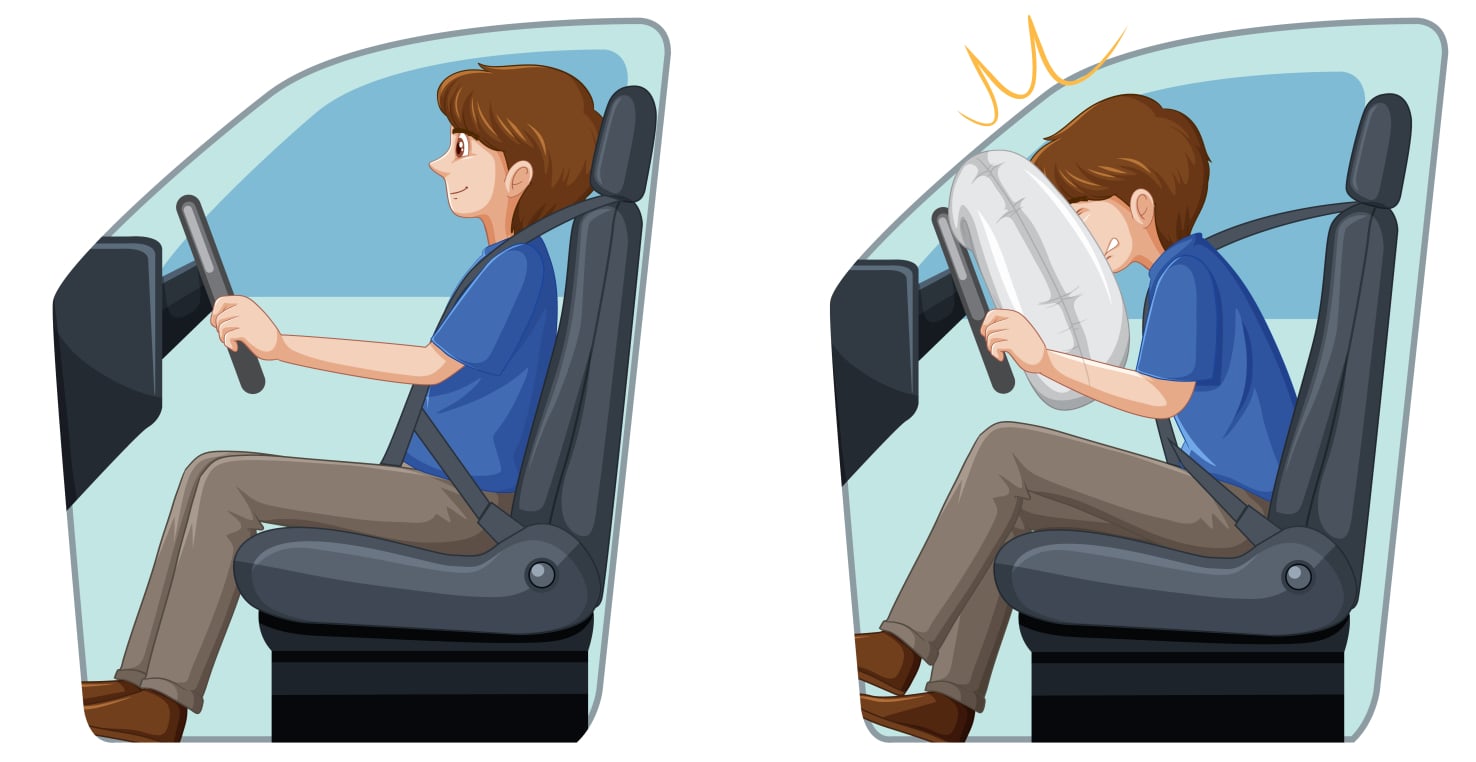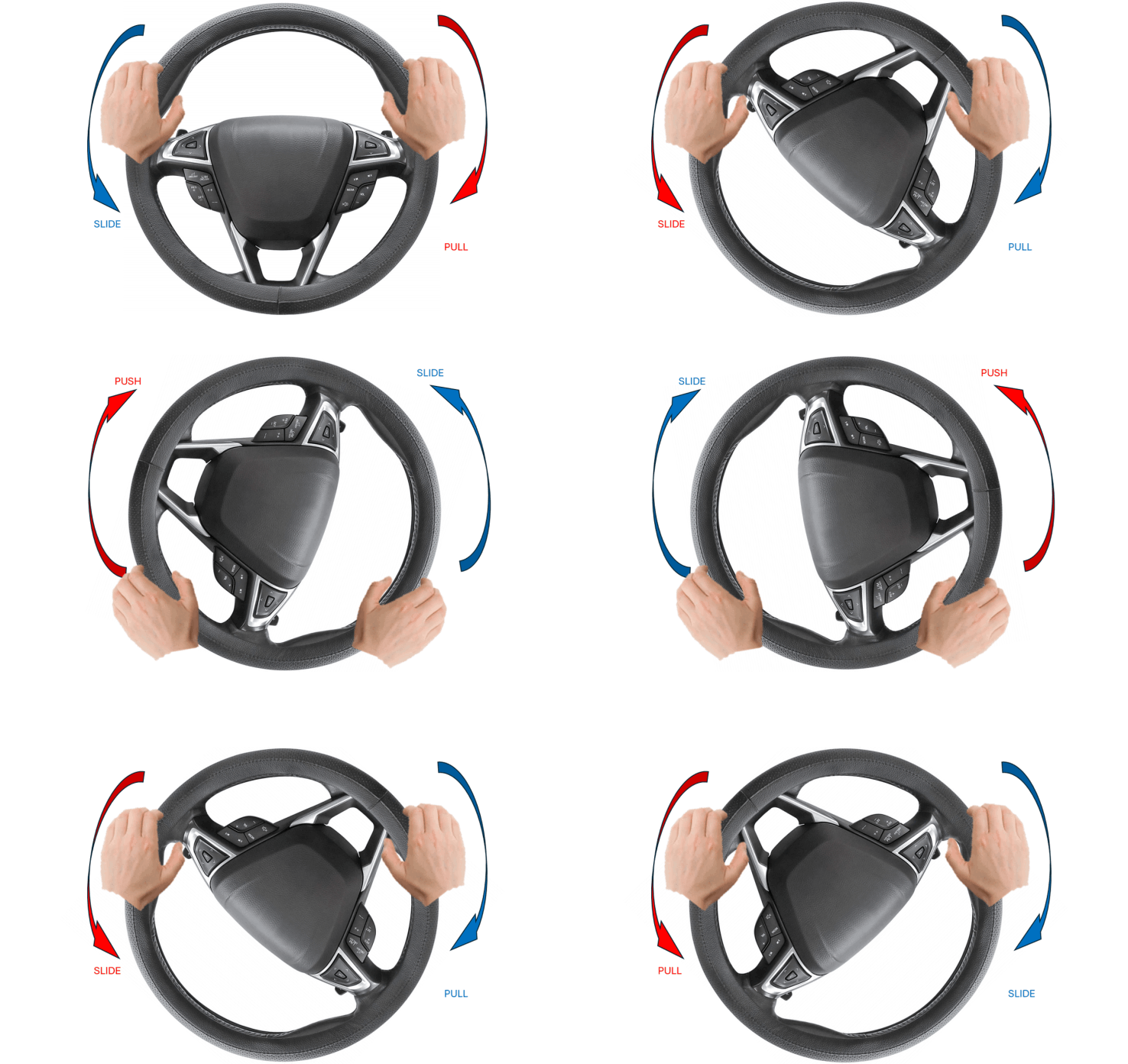
Steering

Steering
One of the biggest misconceptions learner drivers have when it comes to steering a car is HOW MUCH travel there is in a steering wheel!
How much is the fact that not many realise a steering wheel on a car can rotate nearly 3 full turns from one extreme to the other.
This then causes them to not put on enough steering to get a car around a corner.
Then once they do realise how much a steering can actually move they can go in the total opposite direction and place on too much steering and can't work out where center is or where their wheels are pointing.
Learners who may have done Go-Karting in the past will have misconceptions due to the fast steering the get from a quick steering rack
that are fitted to Go-karts. Most Go-Karts will allow full lock to be placed on the steering with less than half a turn of the steering wheel.
It is advisable to explain how much a steering wheel can travel, on your very first lesson, or at least ask your pupil if they know how much a steering wheel can rotate.

Why most instructor recommend the Push Pull Method.

Is literally what your hands are doing as they turn the steering wheel.
This takes place at the top of the steering wheel as you realise there is not enough movement you can get from one hand on the steering wheel, so the other hand crosses over the top of the hand which is already steering and takes over to give more steering.
Obviously as mentioned earlier, Airbags have now become the biggest factor as to why we no longer recommend using the method, However, if a driver has complete control over the car the DVSA seem to have no issue with this method now.
One of the other complications of using this method is should your hands slip, or miss gripping the steering wheel as your hands cross over, With Power steering, it is common that when releasing the steering wheel while the car is moving, the steering wheel naturally wants to bring the wheels back to the central position. Therefore, if you slipped while carrying out hand over hand steering it is highly likely that the steering automatically will take you in a direction you DO NOT want the car to go.
However! Sometimes, in situations like a car park, carrying out a turn in the road, etc, the speed that the car will be doing is usually extremely slow, and hand over hand steering for some can be a quicker method to steer than push pull steering. The likelihood of someone having a crash that would set off the Airbag at such slow speed is possibly very slim, so to use hand over hand steering in those types of situation may be more suitable.
Probably the least advised method for steering, ESPECIALLY WHEN NORMAL DRIVING IS TAKING PLACE!
Is when one hand is placed flat onto the steering wheel and pressure applied so that the driver can whizz the wheel around very quickly.
Again, as with hand over hand steering, this can be suitable in situations where slow speed manoeuvres are being carried out, but in all other situations the safest method of steering would be the Push Pull Method.
We suggest that you experiment with what works best for you. There is no hard and fast rule, other than the Driver MUST be in control of the car at all times.
Drivers who allow the steering wheel to slide through their hands to allow the steering to straighten itself would be deemed NOT in control of the vehicle.
Likewise, drivers who keep one hand on the gear lever or on their leg, is not safe driving practice. Think about the consequences of hitting a pot hole or clipping the kerb!
The steering wheel could be ripped out of your remaining hand and throw the car in a direction other than the direction you want the car to be travelling in.